
Psilocybin vs Psilocin: what’s the difference?
Magic mushrooms contain both psilocin and psilocybin. But what's the difference between these two compounds, and how do they each affect humans? Read along as we offer a primer on the two main psychedelic alkaloids in shrooms.
Understanding magic mushrooms can be a tricky business. Unless you are well versed in chemistry, getting to grips with the interactions of the psychoactive compounds contained within them can be a daunting task, and even then, there is still much to learn. To help spread some knowledge, we are going to take a look at the difference between psilocybin and psilocin, the two main compounds responsible for a magic mushroom trip.
You won’t be a master chemist after this, but you will have some idea of what’s going on behind the chitin! Keep reading to find out more.
Getting to grips with psychedelic compounds
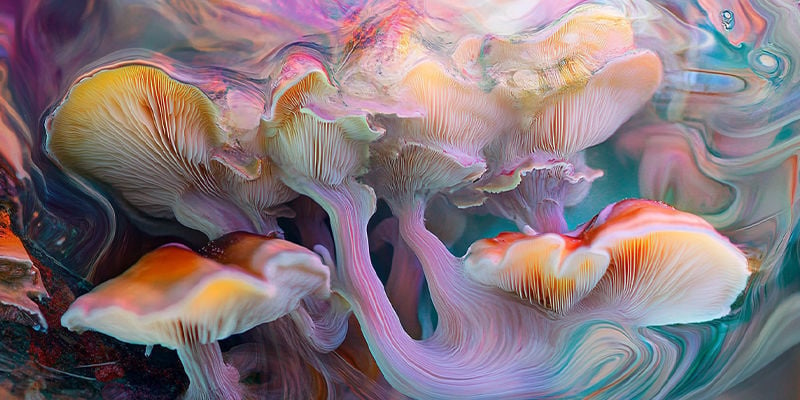
Psychedelic compounds come in a range of molecular forms, but if we’re talking about classical psychedelics (as we will), they all share some similarities. Broadly, all psychedelics can be said to be serotonergic. This means that they exert their effects by binding to and acting on the brain’s serotonin receptors. Though each psychedelic does this in a distinct way—hence the distinct effects—the serotonin 5-HT receptors are some of the most important, and are central to a magic mushroom high.
In psilocybin-containing mushrooms, the active metabolite—that which interacts with the body to cause a high—is psilocin. Psilocybin is a prodrug that must be converted into psilocin if we are to feel its effects through oral consumption. These drugs are tryptamine-derived compounds, and are collectively known as psiloids. Fortunately for us, the necessary conversion from psilocybin to psilocin can happen in our stomachs. However, it can also happen outside the body too. But more on this shortly.
What does psilocybin do for mushrooms?
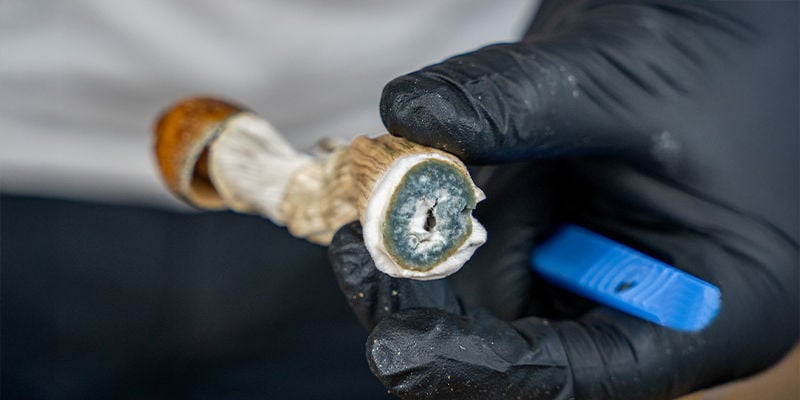
The exact roles that psilocybin/psilocin play in nature is not entirely known, but they're thought to act as a deterrence for predators, which is somewhat ironic. Evolution wasn’t counting on humans coming along with a hunger for alternate realities!
Before we go any further, it’s worth noting that in fresh mushrooms growing in the ground, psilocin is mostly present while psilocybin is generally found in very low amounts. However, psilocybin, rather than psilocin, is more abundant in dried specimens, as it is a more stable compound. Upon ingestion, this psilocybin once again converts back to psilocin.
Scientists can’t agree entirely on why some species of mushrooms produce psiloids. However, the broad hypothesis is that the effects act as a deterrent to most would-be fungal predators, predominantly insects, but also some larger vertebrates.
In smaller creatures, the amount of psilocin contained in mushrooms would be overwhelming and potentially toxic, meaning that there are better snacking options. In fact, this deterrence theory is highly plausible, as it’s no secret that mushrooms are adept at producing highly toxic compounds in order to protect themselves. It just so happens this one is much-loved by many humans.
What is the difference between psilocybin and psilocin?
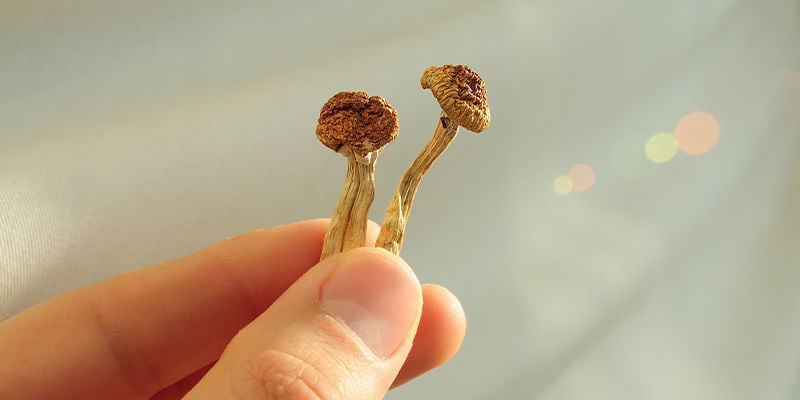
So, what are the notable differences between psilocin and psilocybin?
Both psilocybin and psilocin occur naturally within magic mushrooms, but outside of a fresh and living mushroom, psilocin is very unstable and quickly degrades when exposed to heat or oxygen. This is why fresh magic mushrooms bruise so easily when they are picked—it is the psilocin held within that is reacting and degrading.
Below, we’ll explore some of the major differences between the two similar compounds.
Chemical Structure
Psilocybin (O-phosphoryl-4-hydroxy-N) and psilocin (4-hydroxy-N,N-dimethyl-tryptamine) are distinct compounds, but psilocin could not exist without psilocybin; the latter emerges from the former when exposed to acid.
Some among you may notice that psilocin contains, as part of its structure, N,N-dimethyl-tryptamine, which alone is the structure of DMT. Now, psilocin is not DMT, and DMT is not psilocin; however, the appearance of this structure within the psilocin molecule indicates how similar psychedelic drugs can be.
Brain/body interaction
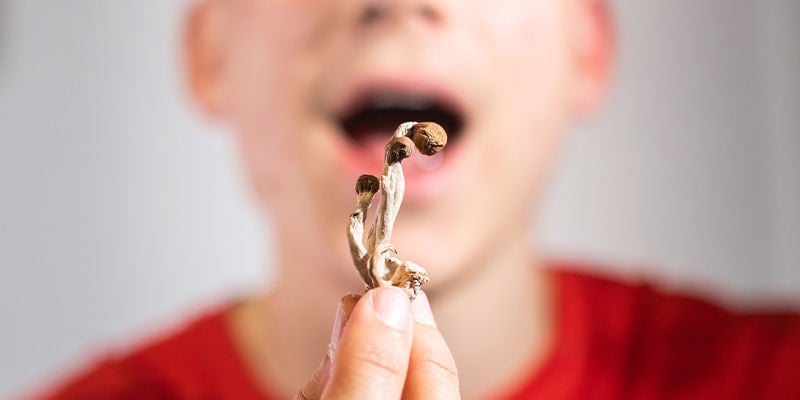
If we ingest magic mushrooms orally, then it is psilocin that gets us high. If we consume dried magic mushrooms, which mostly contain psilocybin, then it is dephosphorylated by the enzyme alkaline phosphatase into psilocin, at which point it can enter the bloodstream and bind with our receptors.
But is psilocybin itself psychedelic? If injected directly into the blood or absorbed via the mucous membrane, then psilocybin can act as a 5-HT receptor agonist and cause psychedelic effects. However, for the vast majority of users, it is the effects of psilocin you are feeling. This is why various techniques, such as lemon tek, are used. They externalise the conversion of psilocybin into psilocin, and consequently make the effects stronger and the onset faster.
Psychoactive effects
The effects of the two compounds are more or less the same. As mentioned in the previous section, psilocybin is psychedelic but it cannot enter the blood via the stomach without first converting to psilocin.
There is ultimately little difference between the effects of the two compounds, although it could be said that psilocin is stronger as it has a greater bioavailability compared to psilocybin.
Dosing
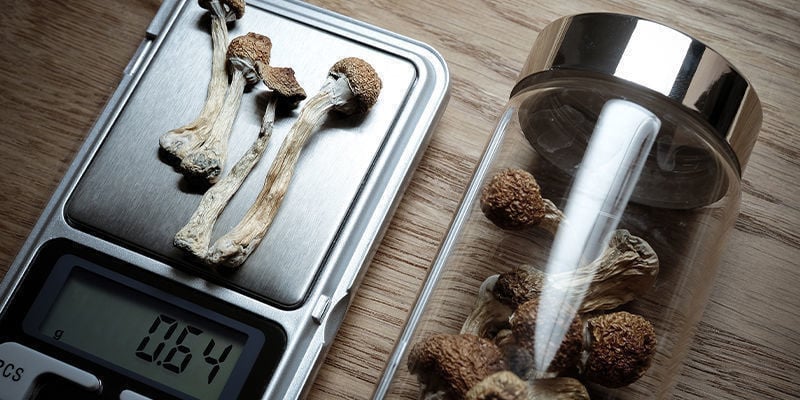
Psilocybin is thought to have a bioavailability of around 50% when ingested—so 50% is lost in conversion. For this reason, it is half as strong as fresh mushrooms. However, fresh mushrooms weigh 10 times more, so it’s a little more complex than this.
10 grams of fresh mushrooms will, once dried, weigh around 1 gram. And once eaten, these dried mushrooms will deliver the same amount of psilocin to your brain as around 5 grams of fresh mushrooms would. So, in effect, dried mushrooms are around half as potent as fresh mushrooms (per mushroom, not per gram).
Almost all dosing guides will refer to dried mushrooms. So unless explicitly stated otherwise, don’t assume you can double the recommended amount. The consumption of fresh mushrooms is uncommon as they have an incredibly short shelf life.
What are the risks associated with psilocybin and psilocin?
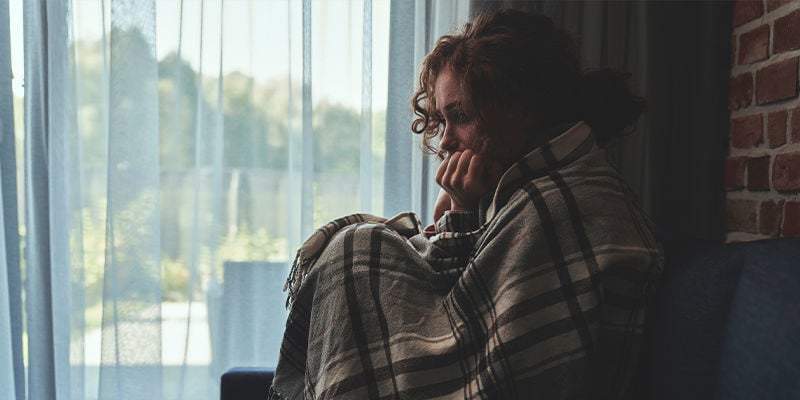
The risks associated with the two compounds are the same. Neither appear to be toxic to human beings, even at very high doses, and so they can be considered physically safe. However, they can have unwanted mental effects, including but not limited to:
- Anxiety
- Confusion
- Paranoia
- Panic
- Hallucinations/delusions
However, these negative side effects are, if they occur at all, usually minor and can be managed easily by tripping in the right environments, with the right people.
Shroomshop
Everything for mushroom enthusiasts. Grow kits, truffles, microdosing packs, spore syringes, vials, and cultures.
Psilocybin & psilocin: Putting the magic in mushrooms
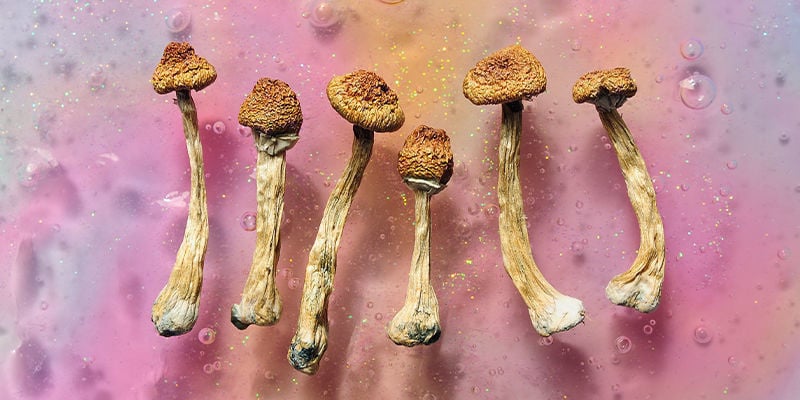
These two compounds, while distinct, can be thought of as the same for most practical purposes. In fact, unless you’re extracting and taking psilocybin (which most people aren’t), then you’re feeling the effects of psilocin. This is because if you eat shrooms, whether fresh or dry, the compound that enters human blood/plasma is psilocin.
Of course, there’s much more to this chemistry than is covered here. But hopefully this overview will give you some idea of the difference, and will answer some of your musings the next time you trip!
-
 4 min
22 April 2021
How To Make Lemon Tek For A Faster Mushroom/Truffle Trip
Sometimes, you just want to come up hard and fast. Luckily, there's a way. If you're after mind-bending trips in under twenty minutes, you've come to the right place. Just make sure you're prepared...
4 min
22 April 2021
How To Make Lemon Tek For A Faster Mushroom/Truffle Trip
Sometimes, you just want to come up hard and fast. Luckily, there's a way. If you're after mind-bending trips in under twenty minutes, you've come to the right place. Just make sure you're prepared...
-
 4 min
18 September 2020
Magic Truffles vs Magic Mushrooms: Who will win?
Magic truffles and shrooms are different yet similar. Both can serve the same purpose, but there are differences between the two that mean one may suit you more than the other. Find out more below.
4 min
18 September 2020
Magic Truffles vs Magic Mushrooms: Who will win?
Magic truffles and shrooms are different yet similar. Both can serve the same purpose, but there are differences between the two that mean one may suit you more than the other. Find out more below.
-
 4 min
5 February 2018
The Most Famous Psilocybin Mushrooms
Magic mushrooms are mostly known for inducing psychedelic experiences, but did you know that there are actually benefits to ingesting psilocybin, the most abundant psychoactive substance in...
4 min
5 February 2018
The Most Famous Psilocybin Mushrooms
Magic mushrooms are mostly known for inducing psychedelic experiences, but did you know that there are actually benefits to ingesting psilocybin, the most abundant psychoactive substance in...
-
 3 min
7 January 2018
Cultivate The Extraordinary: Top 5 Magic Mushroom Grow Kits
Wherever you are in your psychedelic journey, Zamnesia has a magic mushroom grow kit to suit your needs and desires. Looking to pick out a grow kit but not sure which one to select? Here we list...
3 min
7 January 2018
Cultivate The Extraordinary: Top 5 Magic Mushroom Grow Kits
Wherever you are in your psychedelic journey, Zamnesia has a magic mushroom grow kit to suit your needs and desires. Looking to pick out a grow kit but not sure which one to select? Here we list...






 United States
United States












